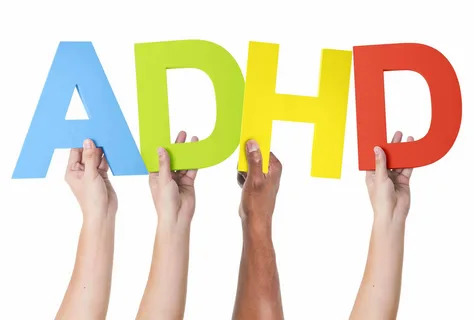
Attention Deficit Hyperactivity illness (ADHD) is a neurodevelopmental illness with symptoms of inattention, impulsivity, and hyperactivity. While many therapies, such as therapy and behavioral methods, are available for controlling ADHD, medication remains a key component of treatment for many people. In this post, we will look at the many types of ADHD drugs, their advantages, and potential hazards.
Understanding ADHD Medications
ADHD drugs work by targeting neurotransmitters in the brain, specifically dopamine and norepinephrine, to improve executive function and lessen ADHD symptoms. These drugs are divided into two categories: stimulants and non-stimulants.
Types of ADHD Medications
1) Stimulants
Stimulant drugs are the most often recommended treatment for ADHD and are frequently used as the first-line pharmacological intervention. They function by raising dopamine and norepinephrine levels in the brain, thereby improving attention, focus, and impulse control.
a. Methylphenidate-based medications.
Methylphenidate is a frequently given stimulant drug for ADHD. It is offered in a variety of formulations, including immediate-release (Ritalin), extended-release (Concerta), and transdermal patch (Daytrana). These formulations differ in duration of effect and dose frequency, allowing users more therapy alternatives.
b. Amphetamine-based drugs
Amphetamine-based medicines, such as Adderall and Vyvanse, are another type of stimulant used to treat ADHD. These drugs function similarly to methylphenidate by raising dopamine and norepinephrine levels in the brain. Adderall is available in both immediate-release and extended-release forms, whereas Vyvanse is a prodrug that is converted in the body into dextroamphetamine, resulting in a longer duration of action.
2. Non-stimulants.
Non-stimulant drugs are an alternate therapeutic option for people who do not respond well to stimulant medications or who have unbearable adverse effects. These drugs typically target norepinephrine levels in the brain and may have a slower onset of action than stimulants.
A. Atomoxetine (Strattera)
Atomoxetine is a non-stimulant medicine licensed to treat ADHD in both children and adults. It works by decreasing norepinephrine reuptake in the brain, resulting in higher levels of this neurotransmitter. Atomoxetine is available in pill form and is normally taken once per day.
a. Guanfacine and clonidine
Guanfacine (Intuniv) and clonidine (Kapvay) are alpha-2 adrenergic agonists that are occasionally used off-label to treat ADHD. These drugs act by stimulating alpha-2 receptors in the brain, resulting in elevated norepinephrine levels. They are available in extended-release forms and are frequently used as supplementary treatments or for people who cannot take stimulant drugs.
Benefits of ADHD Medications
ADHD drugs can provide a variety of advantages for people with ADHD, including:
1. Improved focus and attention.
Stimulant medicines, in particular, have been shown to increase focus, attention, and impulse control in patients with ADHD. This can result in greater productivity and academic or professional achievement.
2. Reduced hyperactivity and impulsivity.
Medications can also help reduce hyperactivity and impulsivity, allowing people to better control their behavior and focus on tasks or activities for longer periods of time.
3. Improved Executive Functioning
ADHD medications that target neurotransmitters involved in executive functioning, such as dopamine and norepinephrine, can improve cognitive processes like planning, organization, and decision-making.
4. Improved Quality of Life
Improvements in ADHD symptoms can lead to an overall higher quality of life for individuals, as they face fewer difficulties in various areas of life, such as academic, social, and occupational functioning.
Risks and Side Effects of ADHD Medication
While ADHD drugs can be beneficial to many people, they are not without risks and adverse effects. Individuals and healthcare providers must carefully consider the benefits and risks of medication treatment.
1. Common Side Effects.
Stimulant medications commonly cause the following side effects:
- Insomnia
- Decreased appetite
- Headache Irritability
- Increased heart rate and blood pressure
- Nausea or stomach upset
- Non-stimulant medications may also have side effects, including:
- Fatigue Dizziness
- Dry mouth Constipation
- Mood swings
2. Cardiovascular Risks
Stimulant medications have been associated with an increased risk of cardiovascular events, such as elevated heart rate and blood pressure. Individuals with preexisting cardiovascular conditions should be closely monitored if prescribed stimulant medications.
3. Potential for Abuse
Stimulant medications, particularly those containing amphetamines, have the potential for misuse and dependence, especially among individuals with a history of substance abuse. Healthcare providers should carefully assess individuals for risk factors before prescribing these medications.
4. Psychiatric Risks
In some cases, ADHD medications may exacerbate psychiatric symptoms, such as anxiety, agitation, or psychosis. Individuals with coexisting psychiatric conditions should be monitored closely for changes in mood or behavior while taking medication.
Conclusion
ADHD medications play a crucial role in the treatment of ADHD, offering benefits such as improved focus, attention, and executive functioning. However, it’s important to recognize that these medications also come with risks and potential side effects that need to be carefully considered. Healthcare providers should work closely with individuals with ADHD to monitor their response to medication and adjust treatment as needed to optimize benefits while minimizing risks. Additionally, a comprehensive treatment approach that may include therapy, behavioral interventions, and support from family and peers should be considered alongside medication treatment to address the multifaceted nature of ADHD.



